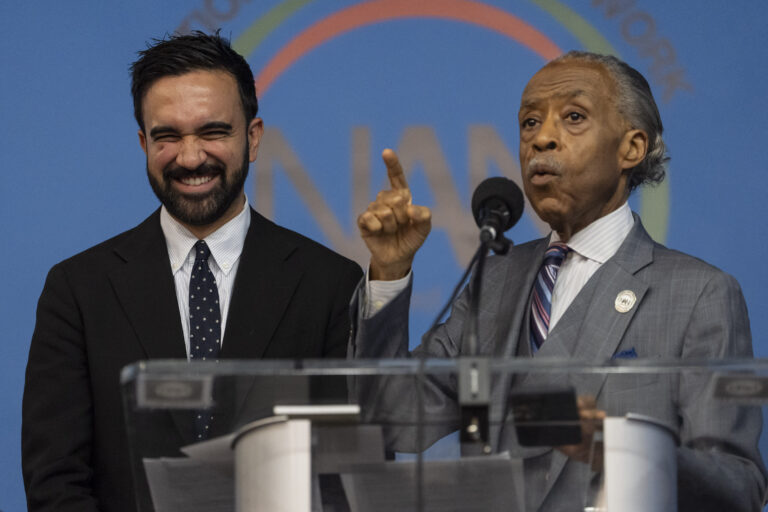Bitcoin topped $98,000 for the first time Thursday, extending a streak of almost daily all-time highs since the U.S. presidential election. The cryptocurrency has rocketed more than 40% in just two weeks.
Now, bitcoin is at the doorstep of $100,000 and investors do not appear to be phased by gravity or any cautionary tales of the cryptocurrencies history of volatility.
Cryptocurrencies and a handful of related investments like crypto exchange-traded funds have rallied because the incoming Trump administration is expected to be more “crypto-friendly” than the outgoing Biden administration.
As of around 10 a.m. ET, bitcoin traded at $97,014 after rising as high as $98,349 according to CoinDesk.
Yet cryptocurrency markets remain a wild place and what comes next is impossible to know. And while some are bullish, other experts are warning of investment risks.
Here’s what you need to know.
Back up. What is cryptocurrency again?
Cryptocurrency has been around for a while now but have come under the spotlight in recent years.
In basic terms, cryptocurrency is digital money. This kind of currency is designed to work through an online network without a central authority — meaning it’s typically not backed by any government or banking institution — and transactions get recorded with technology called a blockchain.
Bitcoin is the largest and oldest cryptocurrency, although other assets like Ethereum, Tether and Dogecoin have gained popularity over the years. Some investors see cryptocurrency as a “digital alternative” to traditional money — but it can be very volatile, with its price reliant on larger market conditions.
Why are bitcoin and other crypto assets soaring?
A lot of the recent action has to do with the outcome of the U.S. presidential election.
Crypto assets saw some momentum ahead of the results, but the “sharp upward move” seen in the weeks following “suggests the market had not clearly and fully anticipated a Republican victory,” Kaiko analysts wrote in a Nov. 14 research note.
It’s no secret that big crypto players have welcomed Trump’s reelection, in hopes that he would be able to push through legislative and regulatory changes that they’ve long lobbied for. Generally speaking, analysts say, the industry wants legtimacy, but also not too many guardrails.
Trump, who was once a crypto skeptic, recently pledged to make the U.S. “the crypto capital of the planet” and create a “strategic reserve” of bitcoin. His campaign accepted donations in cryptocurrency and he courted fans at a bitcoin conference in July. He also launched World Liberty Financial, a new venture with family members to trade cryptocurrencies.
Trump also promised that, if elected, he would remove the chair of the Securities and Exchange Commission, Gary Gensler, who has been leading the U.S. government’s crackdown on the crypto industry and repeatedly called for more oversight.
How of this will actually pan out has yet to be seen. Among lingering questions, Citi bull macro strategist David Glass says, is whether regulation will be enforcement-based — in line with what has been seen in the past — or legislation-based.
“This is not necessarily a short-term story, it’s likely a much longer-term story,” Glass told The Associated Press last week. “And there is also the question of how quickly can U.S. crypto policy make a serious impact on (wider adoption).”
For months, digital assets like bitcoin had also posted steady gains due to the early success of a new way to invest in the asset: spot bitcoin ETFs, which were approved by U.S. regulators in January.
Analysts note that spot ETFs have been the dominant driver of bitcoin for some time now — but, like much of the crypto’s recent momentum, saw record inflows postelection. According to Kaiko, bitcoin ETFs recorded $6 billion in trade volume for the week of the election alone.
In April, bitcoin also saw its fourth “halving” — a preprogrammed event that impacts production by cutting the reward for mining, or the creation of new bitcoin, in half. When that reward falls, so does the number of new bitcoins entering the market. In theory, if demand remains strong, some analysts say this “supply shock” can also help propel the price long term — but others note it may be too early to tell.
What are the risks?
History shows you can lose money in crypto as quickly as you’ve made it. Long-term price behavior relies on larger market conditions. Trading continues at all hours, every day.
At the start of the COVID-19 pandemic, bitcoin stood at just over $5,000. Its price climbed to nearly $69,000 by November 2021, in a time marked by high demand for technology assets. Bitcoin later crashed during an aggressive series of Federal Reserve rate hikes aimed at curbing inflation. The collapse of FTX in late 2022 significantly undermined confidence in crypto overall and bitcoin fell below $17,000.
Investors began returning in large numbers as inflation started to cool — and gains skyrocketed on the anticipation and then early success of spot ETFs. Experts still stress caution, especially for small-pocketed investors.
What about the climate impact?
Assets like bitcoin are produced through a process called “mining,” which consumes a lot of energy. And operations relying on pollutive sources have drawn particular concern over the years.
Recent research published by the United Nations University and Earth’s Future journal found that the carbon footprint of 2020-2021 bitcoin mining across 76 nations was equivalent to the emissions from burning 84 billion pounds of coal or running 190 natural gas-fired power plants. Coal satisfied the bulk of bitcoin’s electricity demands (45%), followed by natural gas (21%) and hydropower (16%).
Environmental impacts of bitcoin mining boil largely down to the energy source used. Industry analysts have maintained that clean energy has increased in use in recent years, coinciding with rising calls for climate protections
(AP)











